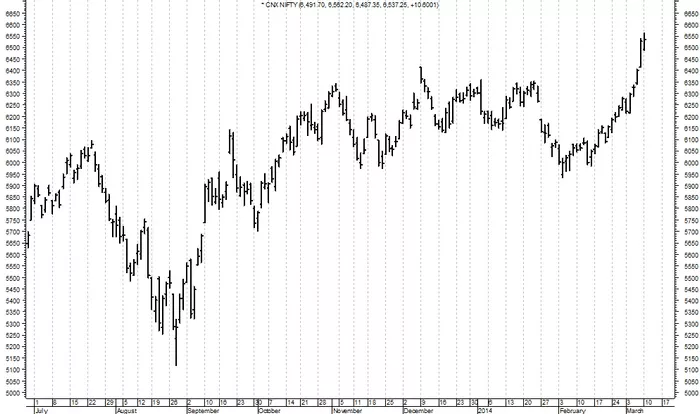Identifying breakout stocks is a crucial skill for investors and traders looking to capitalize on market trends. A breakout stock occurs when the price of a stock moves outside of a defined range or pattern, often signaling the beginning of a new trend. This can be an excellent opportunity to make profits, but recognizing a breakout early can be difficult. In this article, we will break down what breakout stocks are, how to identify them, and the tools and strategies you can use to improve your chances of success.
What Are Breakout Stocks?
A breakout stock is one that experiences a sharp price movement, typically after a period of consolidation, ranging, or technical pattern formation. This price movement signals the stock’s potential to move higher or lower in a strong trend, depending on the direction of the breakout.
The concept of a breakout applies primarily to technical analysis, which is based on the historical price movements and volume of a stock. When a stock price breaks through significant resistance levels or falls below key support levels, it often triggers a momentum shift, making the stock an attractive candidate for traders and investors looking for profitable opportunities.
Breakout vs. Breakdown
It’s important to note that breakouts can occur in either direction:
Bullish Breakout (Price Breaks Above Resistance): This happens when a stock breaks above a significant resistance level, typically indicating that it is likely to continue moving higher. Bullish breakouts are associated with upward momentum and increased buying interest.
Bearish Breakdown (Price Falls Below Support): A breakdown occurs when a stock price falls below a key support level, often signaling that further declines may be on the horizon. Bearish breakouts typically indicate increased selling pressure and may suggest that the stock is entering a downtrend.
In this article, we will focus on identifying bullish breakout stocks, though the principles can be applied to bearish breakdowns as well.
Characteristics of Breakout Stocks
Before diving into how to identify breakout stocks, it’s essential to understand some common characteristics that typically define breakout stocks. These include:
1. Consolidation or Range-Bound Activity
For a breakout to occur, a stock must first consolidate or trade within a range for a specific period. During this time, the stock’s price moves between a well-defined resistance and support level. This consolidation phase is often seen as a period of indecision where neither the buyers nor the sellers are in control. Eventually, either the buying pressure or selling pressure will become strong enough to break the stock out of this range.
2. High Volume
Volume plays a significant role in confirming breakouts. A true breakout is usually accompanied by a surge in trading volume. This increased volume signals that there is strong interest in the stock and that the breakout is likely to sustain. A breakout without significant volume may suggest a false move, and the stock could quickly reverse.
3. Clear Resistance or Support Levels
Resistance and support levels are horizontal price levels on a chart that represent significant psychological barriers for traders. Resistance is the price level at which a stock has had trouble rising above, while support is the price level at which the stock has struggled to fall below. Breakouts occur when the stock price surpasses resistance or falls below support, which often leads to a strong move in the direction of the breakout.
4. Strong Fundamentals (for Long-Term Breakouts)
While technical analysis is the primary tool for identifying breakout stocks, strong underlying fundamentals can also be a signal for a potential breakout, especially for long-term trends. Strong earnings growth, positive news catalysts, and favorable market conditions can provide the fuel for a breakout. However, technical analysis remains the dominant method for identifying breakouts in the short-term.
5. Volatility and Momentum
Breakout stocks tend to show higher volatility and strong momentum. After the breakout, the stock often experiences rapid price changes as traders react to the new trend. Stocks that exhibit increased volatility and momentum following a breakout are more likely to offer profitable opportunities for traders looking to capitalize on short-term moves.
How to Identify Breakout Stocks
Identifying breakout stocks involves a combination of technical analysis, chart patterns, and market indicators. The following steps outline the key methods you can use to spot breakout stocks:
1. Use Trendlines and Channels
One of the most straightforward methods for identifying breakout stocks is drawing trendlines and channels on a stock’s price chart. Trendlines help identify the general direction of a stock’s price movement, while channels define price ranges within which the stock is trading.
Uptrend Line (Bullish Breakout): Draw an upward sloping line by connecting the stock’s higher lows. If the price breaks above the resistance level formed by the upper trendline, it may signal a breakout.
Downtrend Line (Bearish Breakdown): For a bearish breakout, draw a downward sloping line by connecting the stock’s lower highs. A breakdown below the support line can signal the beginning of a downtrend.
2. Watch for Chart Patterns
Certain chart patterns are commonly associated with breakouts. These patterns reflect specific price movements and consolidation phases, helping traders predict potential breakouts.
Triangle Patterns
Symmetrical Triangles: A symmetrical triangle is formed when the stock’s price consolidates with converging support and resistance lines. A breakout above the resistance level indicates a bullish move, while a breakdown below the support line signals a bearish trend.
Ascending Triangles: An ascending triangle is a bullish pattern characterized by a flat resistance level and an upward-sloping support line. A breakout above the resistance line typically signals an upward move.
Descending Triangles: A descending triangle is a bearish pattern with a flat support level and a downward-sloping resistance line. A breakdown below the support level can indicate a decline.
Flags and Pennants
Flags and pennants are short-term consolidation patterns that often occur after a strong price movement. These patterns typically lead to a continuation of the previous trend. A breakout from the flag or pennant pattern signals the resumption of the prior trend.
Cup and Handle Patterns
The cup and handle pattern is a long-term bullish breakout pattern. It forms a “U” shape (the cup) followed by a small consolidation period (the handle). A breakout above the handle’s resistance level signals a potential upward trend.
Head and Shoulders
The head and shoulders pattern is a reversal pattern that signals a trend change. An inverse head and shoulders is the opposite and can signal a potential bullish breakout.
3. Analyze Support and Resistance Levels
Identifying key support and resistance levels is crucial for breakout identification. These levels often act as psychological barriers for traders. When the stock price breaks above resistance or falls below support, it can signal a strong move in the direction of the breakout.
Support and resistance levels are easily identified by looking for price points where the stock repeatedly bounced or reversed direction. Once these levels are established, monitor the stock for a breakout above resistance or below support.
4. Use Technical Indicators
Technical indicators are tools that help traders confirm potential breakouts by analyzing price and volume trends. Some of the most commonly used indicators for breakout analysis include:
Moving Averages
Moving averages help smooth out price fluctuations and identify trends. When a stock’s price crosses above a moving average, it may signal a bullish breakout. Conversely, if the price crosses below a moving average, it could signal a bearish breakout.
Relative Strength Index (RSI)
The RSI is a momentum oscillator that measures the speed and change of price movements. An RSI above 70 may indicate that a stock is overbought, while an RSI below 30 may suggest the stock is oversold. A breakout combined with an RSI above 70 could signal a continuation of the trend, while an RSI below 30 could indicate that a breakdown is coming.
Bollinger Bands
Bollinger Bands are volatility indicators that consist of a moving average and two standard deviation lines. When a stock’s price breaks above or below the upper or lower Bollinger Band, it could indicate the start of a breakout or breakdown.
MACD (Moving Average Convergence Divergence)
The MACD is a trend-following momentum indicator that shows the relationship between two moving averages of a stock’s price. A bullish crossover (when the MACD line crosses above the signal line) can indicate a breakout, while a bearish crossover can signal a breakdown.
5. Watch for Volume Spikes
Volume is a critical confirmation tool for identifying breakouts. A true breakout should be accompanied by an increase in trading volume, as this indicates strong market participation and the likelihood of the trend continuing.
Look for volume spikes when the stock breaks above resistance or below support. If the breakout occurs with low volume, the move may be short-lived and could reverse quickly.
Strategies for Trading Breakout Stocks
Once you’ve identified a potential breakout stock, here are some strategies to consider:
1. Enter on the Breakout
One common strategy is to enter a trade as soon as the stock breaks above resistance or below support. This is often the best opportunity to capture early momentum. However, it’s essential to use proper risk management techniques, such as setting stop-loss orders to protect yourself in case the breakout fails.
2. Wait for a Pullback
Another strategy is to wait for a pullback after the breakout. After the initial surge, the stock may retrace slightly before continuing in the breakout direction. Entering during the pullback can offer a better risk-to-reward ratio, as you’re buying at a lower price within the new trend.
3. Set Targets and Use Stop-Loss Orders
It’s essential to set both profit targets and stop-loss orders when trading breakout stocks. Setting a profit target allows you to lock in profits when the stock reaches a predetermined level. A stop-loss order will help protect you from significant losses in case the breakout fails and the stock reverses.
Conclusion
Identifying breakout stocks requires a combination of technical analysis, pattern recognition, and a solid understanding of market dynamics. By analyzing key support and resistance levels, chart patterns, and technical indicators, you can improve your chances of identifying potential breakout stocks. However, it’s important to remember that not every breakout will lead to sustained gains. Always use proper risk management strategies and remain disciplined in your trading approach.
With time and experience, you will refine your ability to spot breakout opportunities and capitalize on the market’s most profitable trends.
Related topics:



























